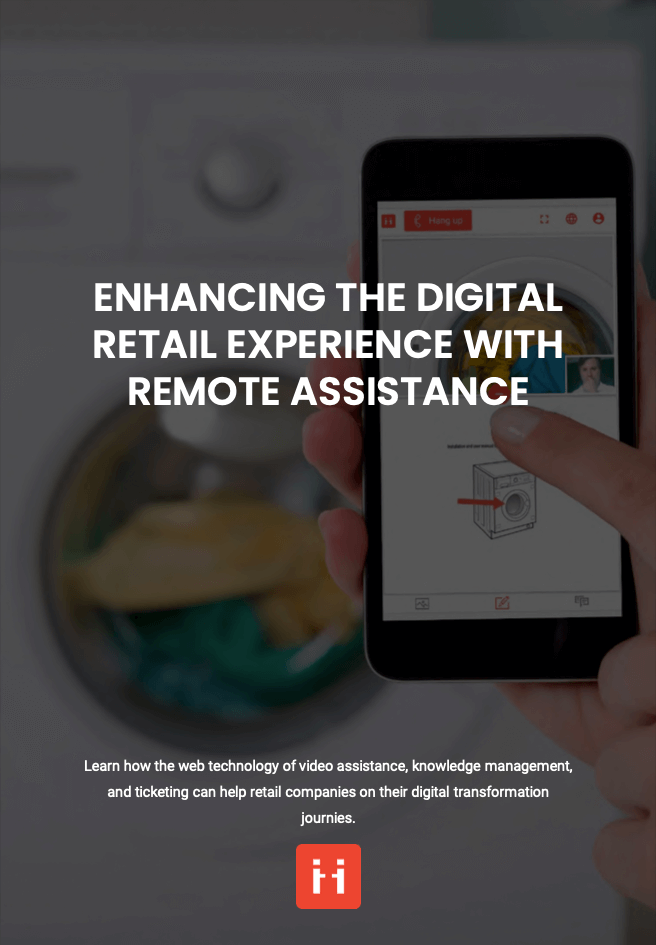
Share this article
Share this article
No matter the industry you are operating in, or the size of your business – nurturing customer relationships is everything. However, especially now, in 2021, building and maintaining these relationships may seem a challenge.
Year 2020 was a difficult year for both businesses, as well as consumers. Customers are still vulnerable and continuously concerned about their health, their economic situation, and their family and friends, according to Future Consumer Index research by EY.
Therefore, out-of-the-box thinking, adaptation, innovation and care are the new tools to address rapidly changing customers’ needs, in order to continually build strong relationships in the post Covid-19 times.
And this is where CRM systems come into play. CRM systems help to maintain and grow the customer base. In this article, we will first explore what customer relationship management (CRM) software is, what are the main benefits, and dive into the trends and best practices that can help you better connect with your customers in 2021.
Customer relationship management system or CRM system is a business software for managing customer relationships. A database that is used to register, store, and analyze all customer interactions and information across all departments to give a holistic view of each customer.
The insights can then be used to measure the value of each customer to nurture these relationships, in order to generate more leads and sales. Data is collected across various communication channels like social media, emails, phone calls or purchase history. In a nutshell – CRM is a software system that gathers all customer information from all customer interactions in one single place.

Previously only large corporations were the ones to use such a system, or thought of as who needed the CRM software – implementation of traditional CRM systems was both expensive as well as time-consuming.
However, cloud-based SaaS CRM solutions have made it more accessible for small businesses as well. It becomes much easier to integrate new software into your CRM. Cloud-based CRM is easier, faster and cheaper to implement. Especially now, when there is extreme focus on customer care and centricity and hyper personalization, no matter the industry or the size of your business, having a CRM system seems to be a necessity.
There are now several excellent SaaS customer service management providers that cater to different requirements available. For basic CRM needs for smaller companies, Freshdesk is a good option. For advanced needs, solutions with extensive features like VoIP integration, Salesforce is a great choice.
Some of the best SaaS CRM software solution providers for every budget include Zendesk, Zoho, Pipedrive or Insightly, or Gorgias, specifically for e-commerce. Each has plans specific for start-ups or for enterprise levels. However, providers like Zoho or Gorgias still tend to come at premium prices. If you are looking for something to fulfill the basic needs, here you can find superb Gorgias alternatives to consider when deciding which one to go with for your business.
Extreme customer focus and customization defines the recent years. A good CRM system can allow a business to be truly customer centric. Logging past interactions with customers, you will be able to provide a personalized experience. Companies need to know how their customers engage with their brand in order to make personalized suggestions.
The main advantages and benefits of a CRM software system are:
The development of CRM systems has gone through some significant changes in the past 20 years. Traditional software providers such as Oracle and SAP were dominating until the first cloud-based CRM software, Salesforce, started to make headway in the late 1990’s.
Salesforce had started a trend – in 2010, SaaS cloud-based services were starting to become the norm. Today, the software-as-a-service or SaaS CRM market is said to be worth around $34 billion, with an estimated CAGR rate of about 14% between 2021-2025. This has been driven by the adoption of CRM systems by SMEs and by the media sector, according to a report by market research firm Technavio.
This led the way to several other new CRM trends and practices: from mobile, customer portals, marketing automation, dashboards, data augmentation to the rise of the API.
If the past ten years were about capturing data, the next ten years will focus on how to enhance and personalize customer experiences using that data. To empower customers, as well as customer service teams and establish more meaningful and profitable relationships.
So, let’s have a look at the current trends and where to invest to have a more customer-centric business model. Consumer engagement in 2021 goes beyond the marketing function and calls for a better collaboration between several departments, from operations to merging marketing and customer service, to better manage different touch points with consumers or clients.
With customizable CRM systems you can adjust the system to your needs as well as customer preferences. Customization allows adding and adjusting features or certain metrics that you want to have or see specific for your business.
For example, integrate data from your sales teams into your CRM system to get more leads. Or for ecommerce CRM – this could be designed specifically for gathering customer contact information or their purchase history to derive insights for personalizing future marketing campaigns.
The key benefits of a customized CRM system are:

Automating your CRM workflows allows companies to save time and effort, to focus more on important tasks such as allocating extra time on customers. With automation you can run manual and repetitive tasks and processes, such as sending follow-up reminders or data-entry, with fewer resources and less human effort.
Therefore, CRM workflow automation can also improve productivity and prevent human errors. For example, keeping track of customer complaints through a ticketing system to be aware of previous complaints in order to ensure high-quality customer service.
Manual CRM processes can help save time for your customers – certain processes are better off automated – such as sending automated email updates or providing automated customer support. Alerting your team of common problems in a timely manner can lead to higher customer satisfaction rates.
CRM systems are excellent for team collaboration and improving productivity. Which in turn can motivate your teams to work towards enhancing customer experience. This will lead to more closed deals and drive sales.
CRM systems allow all team members across all different departments to collaborate and work towards the same goal – providing seamless customer experience.
Just remember to provide proper training for all team members and departments, to avoid your employees not using the system to its full potential. Proper training of your employees won’t only teach them how to use the software, but also how a CRM tool can accelerate your sales and customer service processes.
CRM for social listening, or social CRM, means that customer communication that happens on social media platforms like Facebook, Instagram or Twitter is also incorporated into the CRM system database.
Most of the world – 85% – is now connected through social media, with 62% sending and receiving communication through social channels, according to Reuters. This makes social listening an extremely important feature, and should definitely be incorporated.
As CRM features develop, social listening practice has been in focus in the past few years. It is an extremely important trend, benefits include targeting your marketing efforts on social channels, higher personalization and more convenient and customized support.

Artificial intelligence is undoubtedly one of the most trending technologies at the moment. CRM technology is rapidly changing and growing. As these CRM tools develop and become more intelligent, they can also offer more truthful and accurate insights into customer behavior.
But, only 12% of businesses use AI-based tools to allow focus on high-value customers, research by Freshworks, a SaaS CRM provider, shows. Most surveyed companies said to be waiting for AI to deliver on the fact that it helps to improve their processes, and haven’t seen many useful effects or the real value.
Even though AI-powered CRM tools have been expanding since 2016, research shows that AI technology hasn’t delivered or achieved the status of “necessity” in CRM just yet.
However, there are several qualities that are likely to make it a must have in CRM in the future. For example, the rising volumes of data, or unstructured data to be specific, will make the processes infeasible without AI. What is more, evolving complicated customer relationships and demand for personalization will be tricky to maneuver without the help of AI and machine learning.
Despite the research showing that companies are slow to pick up on this trend, as the processes keep getting more complex, the advantages of AI integration to CRM seem to be slowly, but consistently, rising.
By 2023, 50% of medium and large companies are expected to adapt low-code application platforms as a strategic goal, Gartner’s 2020 report into low-code application platforms shows.
Low-code development – creating processes by using simple logic models and drag-and-drop tools replacing heavy coding – approach gained traction already before 2020. However, this trend accelerated especially during the Covid-19 pandemic, as people working from home needed apps developed asap.
Low-code or no-code approach enables users with no prior coding skills to create or edit features within CRM and roll these changes out almost immediately. It allows productivity to increase, reduce project backlogs and encourages innovation. It can also make a huge difference for CRM systems, as this can make customization available for all employees and not just coding experts.

One important trend for the CRM sector is to integrate a remote visual module tool into its marketplace and IT ecosystem. The idea is clear; to offer its users the option to quickly and frictionlessly add the video and visual support tool to their CRM.
For example, ViiBE visual solution for customer service has proven many benefits for each CRM users. By increasing the customer satisfaction and first call resolution, but also by decreasing the waiting time and the diagnosis delay.
Here is a list of CRM who has integrated ViiBE visual support into their IT ecosystem:
And there are many more to come.
Some benefits from using ViiBE services are the following:
From the historical development of the CRM systems, we have seen a huge shift from traditional software CRM systems to cloud-based SaaS CRM software, making CRM systems more widely available – also to small businesses and companies across industries.
The next ten years will undoubtedly introduce even more exciting and advantageous features that can expand, maintain and grow customer relationships to a whole new level. If the past 10 years have been about collecting data, the next 10 years will be how to structure and use this data to its maximum potential to develop even more meaning and productive relationships.

Free E-book available now!